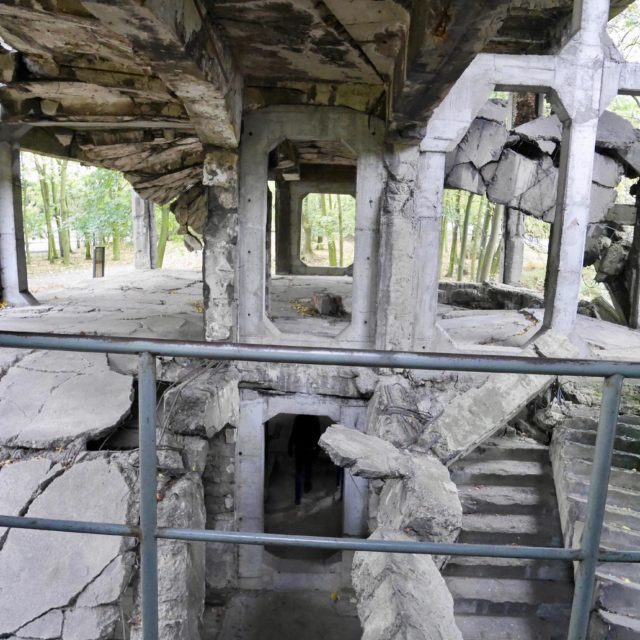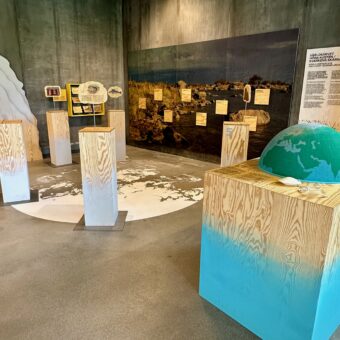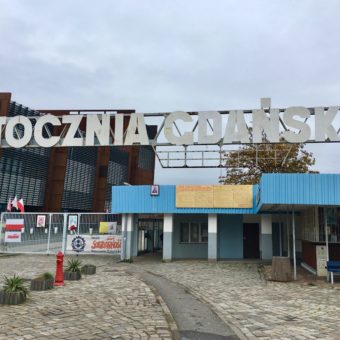Westerplatte
Gdansk, Poland
The peninsula of Westerplatte was the site of the first salvos of WWII. Strategically important, it had already been identified as a potential target for Hitler and, as such, the naval garrison stationed there had been fortifying it in the months preceding the outbreak of war.
Constrained to some degree by stipulations in the Treaty of Versailles, the number of men stationed here was relatively small in number and thus when the German ship Schleswig-Holstein commenced its attack at 4.48am on 1st September 1939 the troops were immediately outnumbered. Nevertheless the two hundred or so men were able to withstand the attack and hold the three thousand German troops at bay for a whole week. Even more incredibly, they only lost fifteen men during the siege all of whom are commemorated in a small memorial.
A trail follows through some light woodland and is interspersed with posts detailing key points about the battle. There are a few ruined buildings dotted round including a bunker facing out over the sea and strangely evocative when you think of the men hunkering down in it, waiting for the attack to commence.
Further on and one comes to the aforementioned and moving reminder of the fallen men, simple headstones inscribed with each of the names, and dominated by a large stone cross.
The ruined garrison building can be seen and in fact visitors can venture inside to view the scale of the damage.
The walk ends with the towering Monument to the Defenders of the Coast. A striking piece of Communist sculpture, it was unveiled in 1966 and now serves as the site for annual commemorations of this Polish heroism and other services relating to World War II.
General accessibility information
Access is generally OK. The initial gravel path is a little uneven and rough in places but would be achievable for a lot of people. It may be worth having a helper in some parts, although if it is too tricky there is an alternative path along the road and you would only miss out the first bit.
The remainder is along concrete paths and these are mostly supplemented with ramps alongside any steps.
The ruined garrison building has a ramp to access so wheelchair users can also get inside to see.
Upon reaching the monument there is a path to get up to it – this has steps initially. so would not be possible for most wheelchair users however its sheer height means one is still afforded a good views from down below!
The best way to reach Westerplatte is by boat, although there are some issues with this as the ramp to access the jetty in the Old Town is very steep. If you can manage it, the boats themselves are largely accessible. Alternatively, bus 106 from outside the main train station will bring visitors straight here and is wheelchair accessible.














